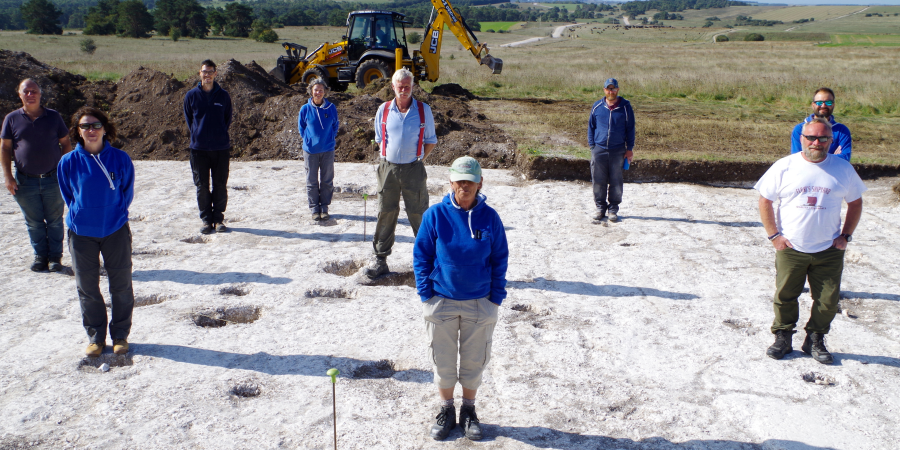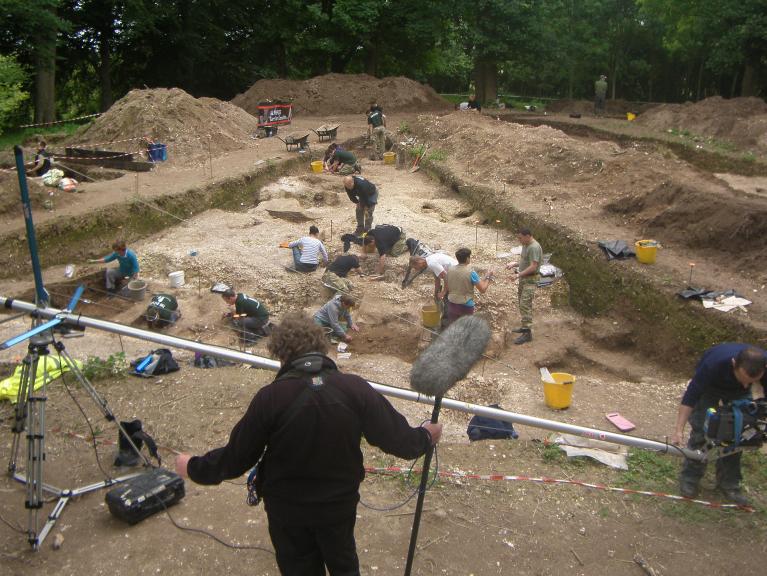In September 2020, Wessex Archaeology returned to undertake its 12th Operation Nightingale Project on Salisbury Plain, again in conjunction with Defence Infrastructure Organisation (DIO) and Breaking Ground Heritage (BGH). For Dave Murdie and myself it was also a return to a site at Dunch Hill, near Tidworth, where we had worked 25 years ago in advance of construction of a new hard-surface track across the military training area.
Postponed because of Covid-19 from July, we were fortunate to enjoy two weeks of glorious weather, perfect for social distancing, with camping on site not possible this year and the wonderful facilities at Tedworth House temporarily unavailable for rest and relaxation.
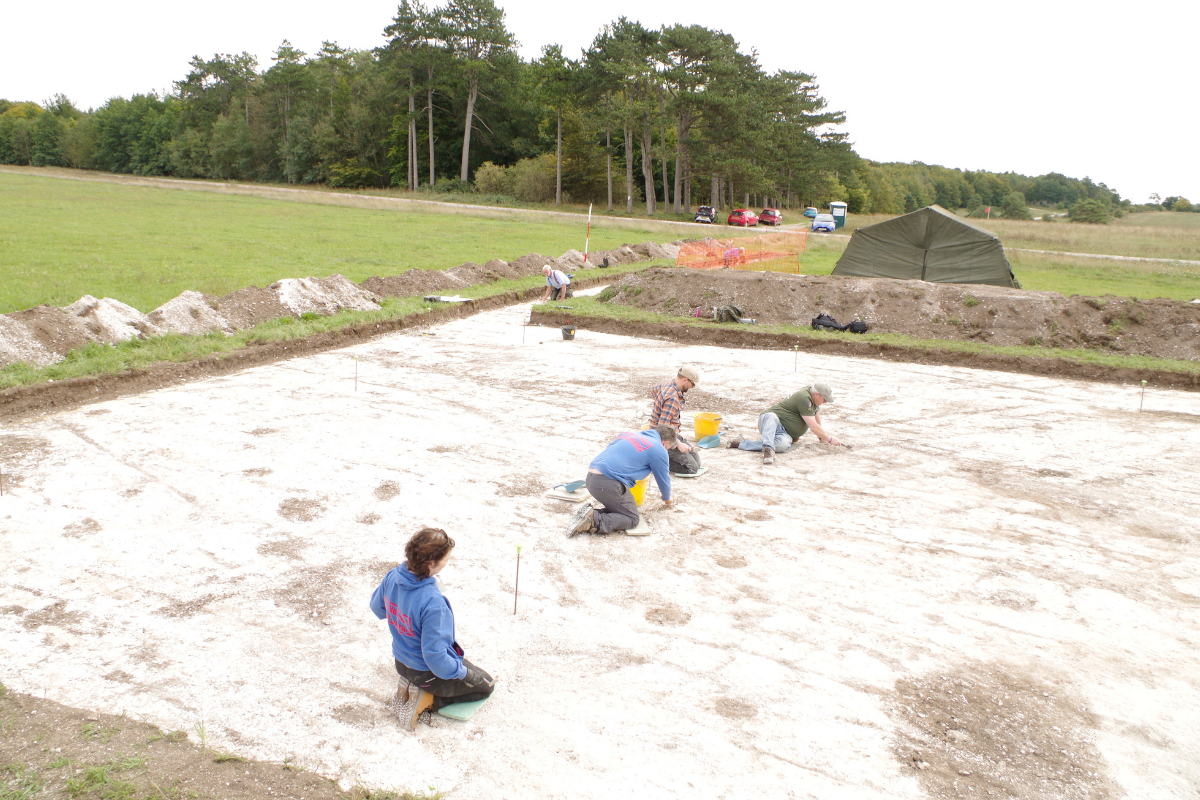
Following another piece of immaculate machine stripping by Tim Coates and his JCB, Dave and myself, supported by our regular site volunteer team of Briony, Kathy, Rog, Carlos and Janine, along with Richard Osgood (DIO), led a mainly new group of Vets in uncovering a further part of a relatively rare (at least on the Plain) Late Bronze Age settlement.
The primary archaeological aim was to monitor how ploughing had affected deposits outside the area covered by the Scheduled Monument, between 1990 when Richard Bradley from Reading University had undertaken fieldwork and 2010 when ploughing was stopped. Our work in 1995 had found four roundhouses and several associated structures, as well as an earlier Middle Bronze Age ditch and a cremation grave, the burial made adjacent to two upstanding Early Bronze Age barrows.
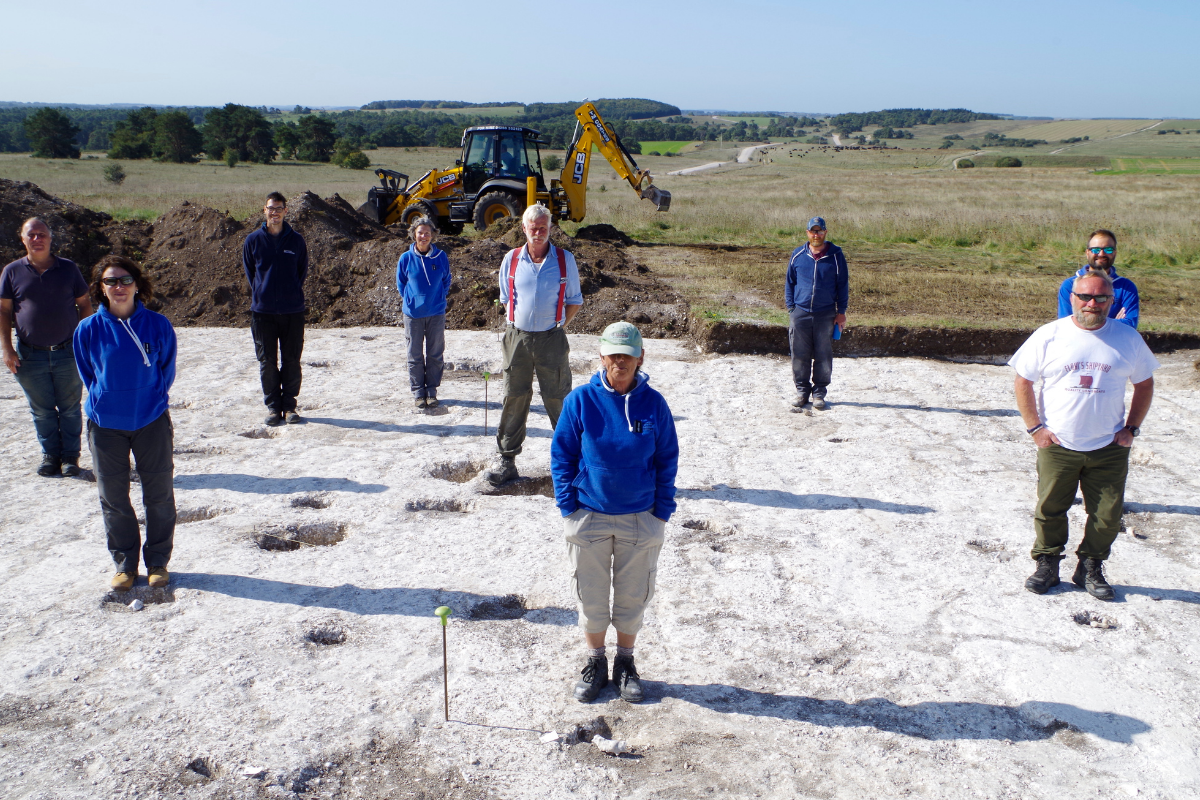
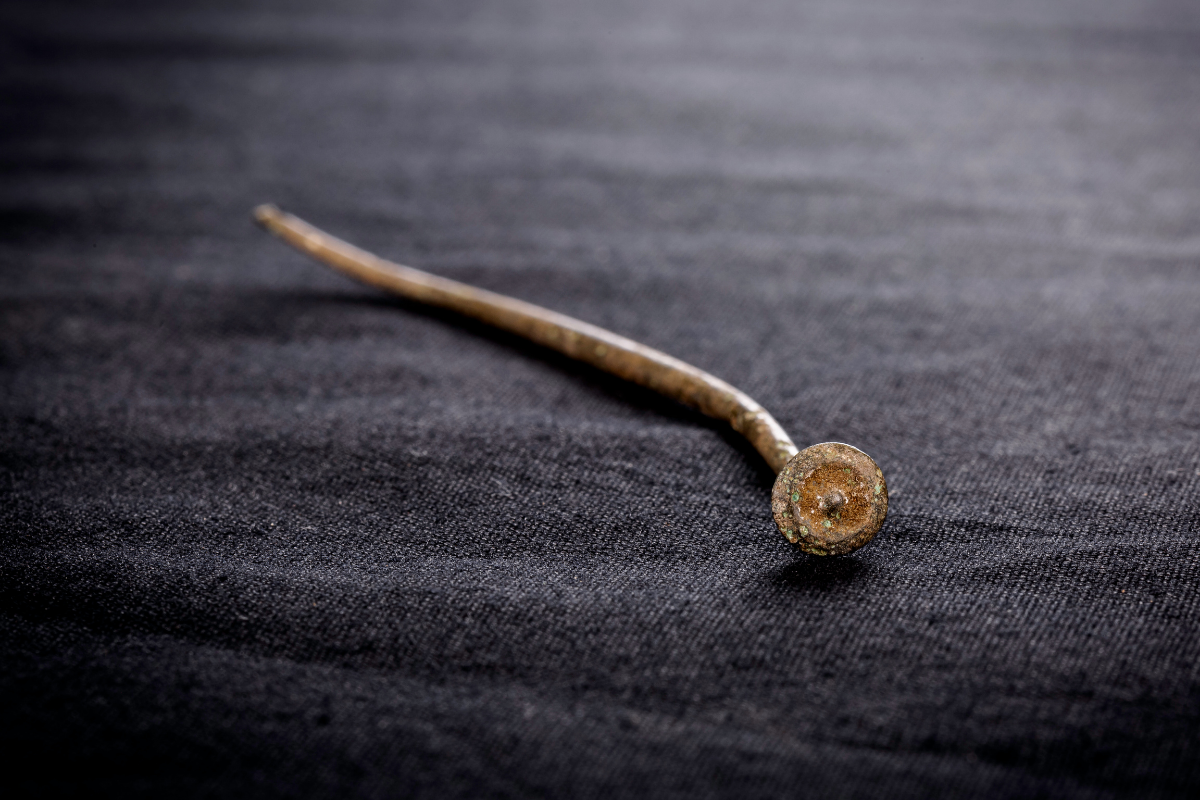
The postholes of a further roundhouse were revealed in 2020 (above left), along with three 4-post structures and a fence line. Finds included small quantities of Late Bronze Age pottery and struck flint, as well as a lovely example of a disc-headed pin (above right) – the latter redeposited in a recent military trench (dated by a biscuit wrapper!) and appropriately found by Chris, one of our new Vets. No trace of a shallow midden deposit recorded in 1990 was found, perhaps ploughed away subsequently or not extending as far as our site. However, the work did demonstrate that military training associated with the recent Iraq/Afghanistan campaigns had had no impact on the archaeological remains.
The excavation was complemented by an extensive geophysical survey of the surrounding area which revealed further details of the preceding Middle Bronze Age field system, visible in aerial photographs, and the setting of the Late Bronze Age settlement (below).
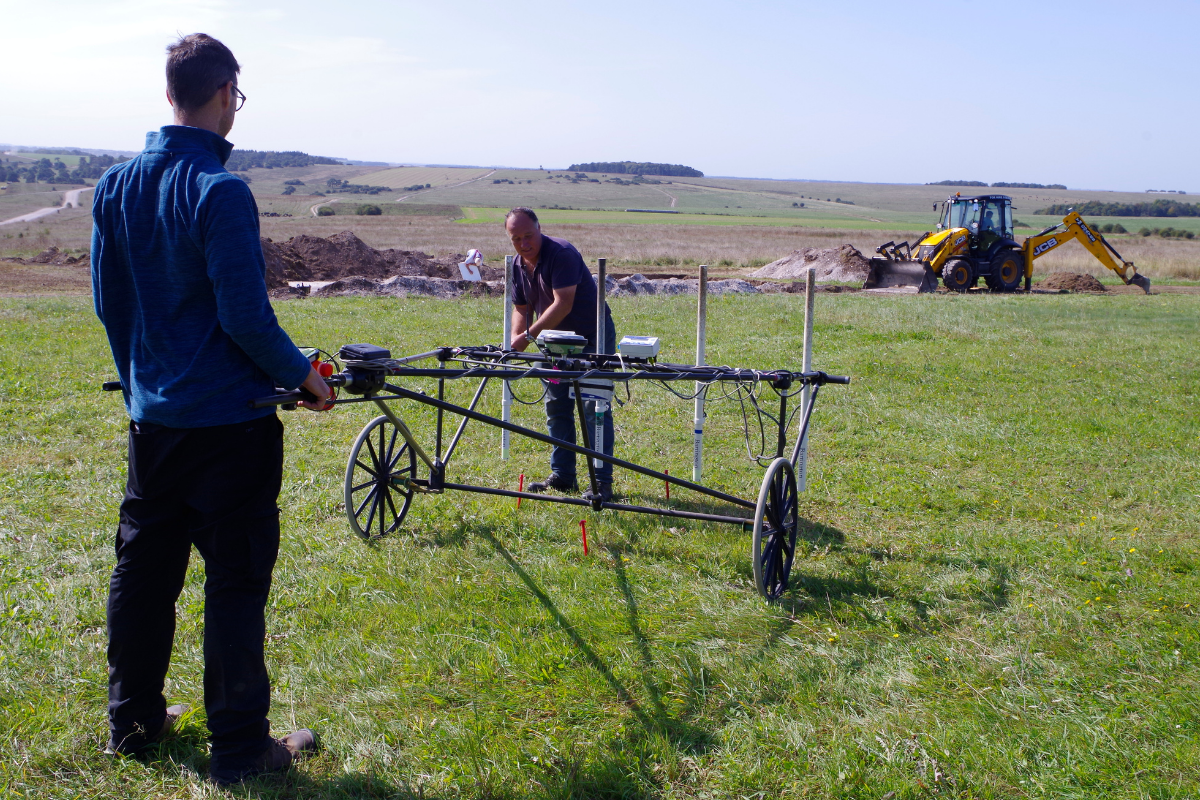
The excavation provided everyone with a very enjoyable interlude in these challenging times and introduced several new Vets to the archaeology of the Plain. Unlike normally, the project won’t finish with the production of a report, but also – it is hoped – with the reconstruction of a Late Bronze Age roundhouse! A collaboration established with Butser Ancient Farm (Hampshire) by Gareth Chaffey, leading to the reconstruction (nearing completion) of a ‘Horton’ Early Neolithic house, will continue with this new venture, Dunch Hill providing the template this time. Planning for this is well advanced and it is anticipated that construction work will begin in Spring 2021, again involving Vets through Operation Nightingale. Watch this space!
